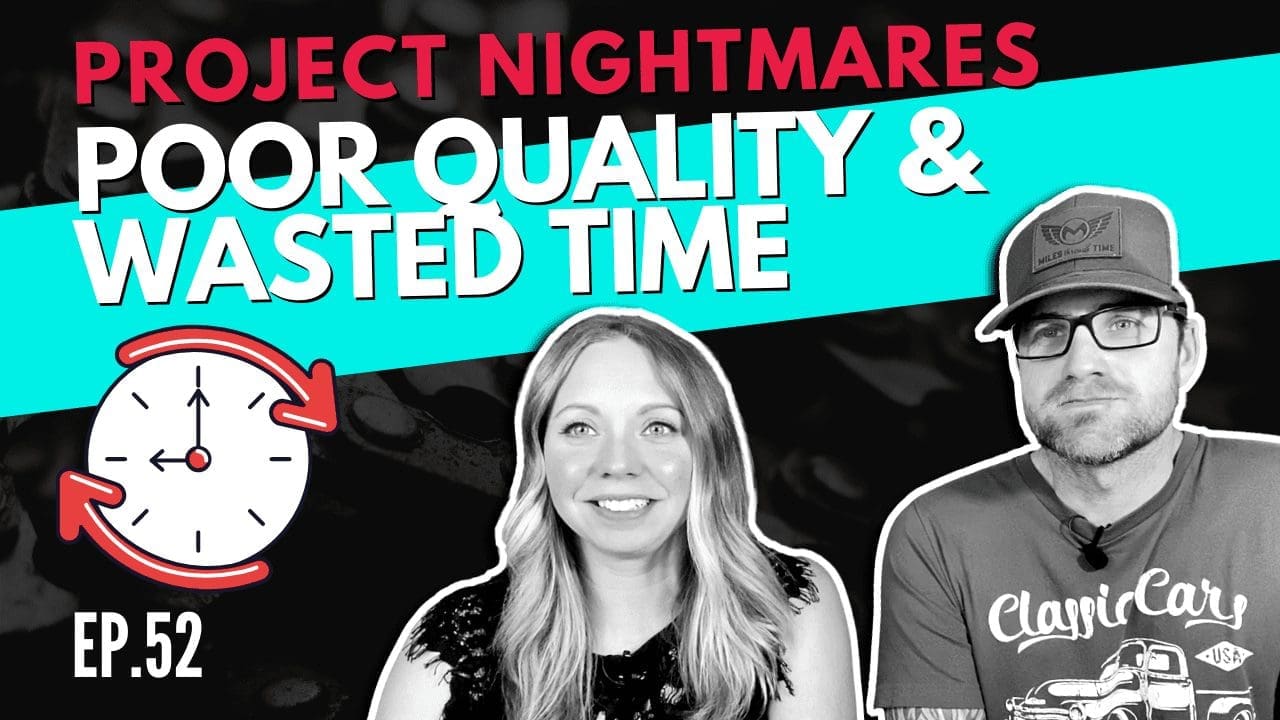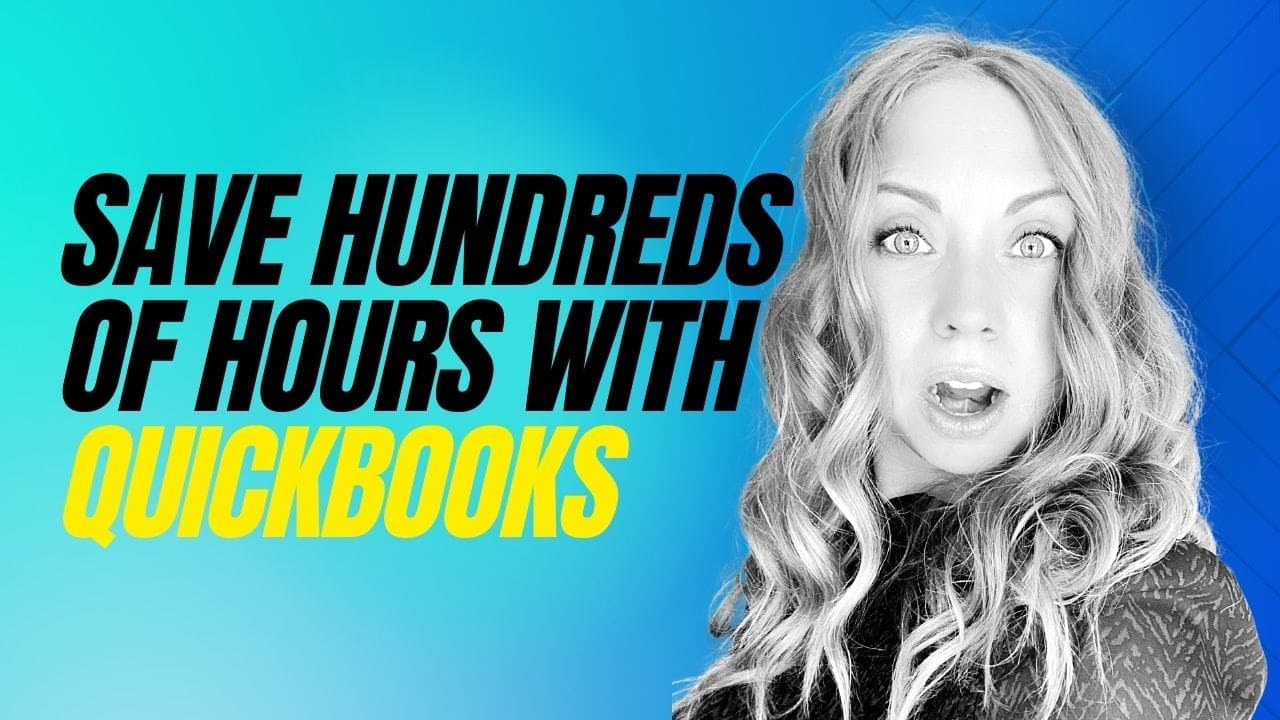Ep. 52 Sacrificing Quality and Wasting Time

Sacrificing Quality and Wasting Time
Is your pride, stubbornness, or budget wasting time and sacrificing project quality? The problem may be beyond just your level of experience.
Torie Mathis and her cohost Sean talk about the mistake of assuming you can tackle a deceivingly easy task and when it’s best to let experts take the lead.
If you want to reach your goals, if you want to grow your business, if you want to take big leaps forward it’s time to work smarter.
Get SMART AF resources and tools to grow your business at besmartaf.com
Listen or watch the full episode below:
EPISODE TRANSCRIPTION –
(transcription is auto-generated)
SAF 52
[00:00:00] Torie: It seems easy. Like you look on the outside and you’re like, I could do that. That looks super easy.
Hey, Hey, welcome to Smart AF on your host Torie Mathis. We’ve got a great show for you today, so let’s get started. Hey everybody welcome to the show I’m Torie Mathis your host here with the myth, the legend Sean Mathis.
[00:00:30] Sean: Hey.
[00:00:30] Torie: So if there’s two times that we have really noticed that it’s super important to have the right tools it’s running your business and renovating your house. All right.
[00:00:44] Sean: Yeah renovating the house occurred well, we, we experienced the pain in that before we ever experienced in the business side. I even thinking back, was it 15 years now? Almost 15 years. It still hurts to think of the kind of shoddy quality we put together.
[00:01:05] Torie: Well as it turns out like woodworking is, if you don’t have the tools, then you’re probably not going to have a quality product.
[00:01:13] Sean: The thing is too is like, I didn’t even realize, you know, how wrong I was doing certain things because we didn’t have the right tools. Yeah, I was trying to make, do with what we had available at the time, especially since it’s not something that we were doing on a consistent basis to, you know, more paying for, you know, really end and specific tools for that job specific. Like it was just, we were doing something simple, and ultimately, wow. Spending a shit ton of time trying to do it. And then the end product isn’t anything you want to brag about, which is kind of frustrating.
[00:01:54] Torie: That’s a thing too. Is that what seems easy? Like you look on the outside. I could do that. That looks super easy until you get in there and you really don’t realize what people are using to actually produce that quality.
And what kind of experience goes into it? Because some of it, like you said, like you don’t know until, you know, We had a client project real route back. We had a client project recently that the client decided that they were going to design it themselves. And this is not something that I have ever let clients do because I have experienced the pain of trying to print things that client designs, and they don’t have the right tools.
And so it ends up being a mess. And I think that Sean I learned this yet.
[00:02:44] Sean: I know it’s always best to have Torie design, whatever it is for our clients. But I that’s the only end of it that I knew is I will, they’re not going to get as good of a design. But there’s more to it than that, you know, when it, when it comes down to it like that like we might as well designed in the end. Ultimate.
[00:03:04] Torie: I might as well have designed it about four times at the end. And again, like, even you, you know, even you being around all of this, you don’t realize what really goes into it, even though they sent in what they thought was a print ready file. Even if it would have been done. Right. I would have still, I told you, like, I still had to put it in and like, get it print ready, like the right colors and like that kind of stuff.
But even you, you know, being around it, you didn’t realize how much more it’s not just that it won’t look as nice, which definitely might be the. There were so many problems with this file. And the thing was is that they didn’t use this as a design program. I’m not sure what they designed it in, but like fonts weren’t attached, they weren’t embedded.
So that didn’t work and the pictures were wrong and they were, I mean, it was a nightmare. You guys and I could have just designed. In, you know, a few hours where it took us so many times trying to get this thing right. For print, because when you are not the one that created it, you don’t really know what went into, like, I didn’t even know what I had to fix because there were so many things that ended up being wrong in the end that it took days upon days to figure this stupid file out. That if they would’ve just sent me the materials, I probably could have gotten it done really quick.
[00:04:19] Sean: And like you said, like fonts, like most people are like, what do you mean you didn’t have the fonts I gave you the files, the sponsor there. Well, when the file gets converted to be able to be printed. The fonts, we looked to defense weren’t there. When we opened it up into a different file format that we were going to actually have to upload for print. There was texts we couldn’t even see. So then ultimately like now we don’t even know if what we’re sending to print is what it’s supposed to be because we don’t know. And that, that sets.
Everyone up for failure, really at that point. So now the client spent all this time doing what she thought was going to be, you know, easier for everyone. And, and she could be proud of it, ultimately, like, hopefully, she’s happy with it.
[00:05:08] Torie: Because I think it was a mess. You guys, it was not good. And you know, like you said, she was trying to do the right thing, but she didn’t have. The right design tools to make a print ready file. And to have it correct. I don’t know like if people just go into like office max or something and just give them some crap, like, I don’t know how they just pushed up through, but if you look here, they know staples, they’re like, here’s your file, right? That’s true. No bleed. Right. And so when we are trying to get files ready for print, like there, they’re not going to be accepted if they’re not done correctly. And again, like nobody would know that unless like, that’s what you do. It’s just one of those times you need to just let the person doing it. Yeah.
We were talking about, you know, changing the oil, changing the oil in your car. Seems like a super easy thing to do. Like how hard is it? But really there’s so much more into it that you might have to buy special tools. You have to figure out how to discard the oil. Like what seems like a simple thing. If you wanted to do it yourself, you’re probably going to spend more time and money and figuring all this stuff out and getting what you need, where you could just go get it changed really quick.
[00:06:15] Sean: I can totally change the oil on almost any car. I’ve bought the tool to remove the oil filter, which is like a band that then you’re able to tighten it down and then untwist it. But I think the last, the last it’s been years since I’ve changed my own oil, but I think the last time I did it, the, a container of old oil was sitting in the garage for what feels like a really, really long time before I could figure out what to do with it. And I think it took a. I think it took Linder like mailers. I was like, eh, you know, have all these random things that need to be disposed of, you know, oil being one of them. Then that’s like your opportunity. Granted, you could probably take it to a landfill or something and pay right to, to dispose of it correctly.
[00:07:03] Torie: Something that like a layperson would never think, like you can’t just throw oil away. Like you can’t throw those parts just no.
[00:07:09] Sean: But then you’ve also got to account for your time. To do the whole world change. Plus then too, you know, now you’ve got to take the old oil and dispose of it. You know, you gotta, you gotta account for that time to get to the landfill. It’s going to cost you to, to dispose of it most likely, you know when you start tacking all that. And how did you, did you tighten it correctly? Is there going to be an oil leak? Did you put the right amount of oil in it? Like, I’m just going to go pay somebody that can do it in less than 10 minutes and, you know, chances are, it’ll be fine.
And if not, I will have gone to a reputable company that will make it.
[00:07:47] Torie: But again, looking at things that you think are going to be easy. Do you remember that house that we had? The one that we renovated had this giant pad of concrete in the backyard. It was huge. Like they, they took the entire lawn and then laid like a basketball court, like straight through the middle of it.
[00:08:06] Sean: It was like 40 feet long, so big 20 feet wide.
[00:08:10] Torie: So from the side, like you could look at it and you know, it was like two or three inch. Of concrete and we thought we could break that up. Like it’s going to take awhile. And luckily my dad has a construction business and so my brother came over with a Jack hammer and he had a truck. So we thought like a big, what would you call that kind of truck?
[00:08:30] Sean: It’s like a flatbed truck.
[00:08:31] Torie: Like a big flatbed truck with sides on it, so that we were able to dispose of all of the concrete and stuff. But looking at it like, you’re like, we can’t do that. That’s no problem. We did it. But that concrete wasn’t two to three inches. There were, I don’t know like they like filled in holes and I don’t know.
[00:08:50] Sean: If they did not level the ground out with gravel first and make it a consistent level.
[00:08:54] Torie: There are places that it had to be like 18 inches. Like there was so much concrete. So again, like we looked at it, we’re like, oh yeah, no problem. We can get this done. But you don’t expect what problems are going to come up. Whereas somebody that’s a little bit more qualified would know, you know, Hey, I broken up a few of these. It’s probably not going to be, you know, and that’s something that people look at design jobs or took it, any type of services type of business that were, you know, not, not even services. They look at it and they think, oh, you know, painting a room or something. Super easy, but then all those little things that you don’t realize that the tools that you need, those little tricks that you just don’t know, Sean built well in the museum built a whole bunch of new displays with Truett. Truett is a woodworking genius, right? He is a builder. And you said you learned all kinds of stuff from him it’s like you would have never known, right?
[00:09:50] Sean: Yeah. It was funny at the beginning we were like, well, I’ll bring my saw. And he was like, oh, I’ll bring my saw. And we get there. I’ve got a little Skilsaw that we, we bought when we bought our house.
That’s just like the cheapest one that, that you can say is, you know, a Skilsaw and he pulls out there and he’s got these racks and he brings it up to his level and then the saw actually will rotate out and go back in so we can cut like these super wide pieces. Man. I no wonder I’m all bent over doing stuff. You’ve got to flip the board two different ways to get it cut all the way through. And it’s like, Hey, like he has the tools. To do what we need to do. And I just, I don’t get it.
[00:10:37] Torie: And you don’t know until, you know, like there’s no way you have a saw, I could do it for.
[00:10:42] Sean: I mean, up until these, these last exhibits I’ve always used a hammer, you know, you’re like banging all the nails in and, and like now I’m like nail gun, man we’re done. And that’s the way to do it. But again, I didn’t know. I didn’t have the right tools and I, everything that I have done has been not the easy way and definitely not the best way to do anything.
[00:11:12] Torie: Yeah. And you probably would know, like someone’s bidding out a job to build something like that. Like they’re building, building in all those costs for those types of things that if you looked at it inside of you, those telling me that story.
[00:11:26] Sean: Yeah, it was I saw this thing and it’s out there. There’s all kinds of variations of it. But the one that I specifically saw was a picture of stairs to a deck on the corner, and then the stairs were unfinished, but you could see how all the wood beams and everything were in there and, and the geometry of, of getting everything so that it even looked. And the whole thing was that the builder of the deck gave the homeowner a price to build this deck. And the homeowner’s like, well, that sounds pretty steep. I think I might just do it myself. And he’s like, okay, well you can do it yourself. He’s like, but the homeowner’s like, I, I don’t have the tools.
So the is like, well, I can rent you my tools. It’s like, okay, great. And he’s like but I, I don’t have any way of getting the Lumber’s like, well, you can rent. So it’s like, okay. But I can’t do it Tuesday. I can only do it Wednesday. Well, the builder’s like, ah, I only have it available on. On a Wednesday and the guy’s like, oh, so now I got to take off work to be able to do it on the day when I can rent the truck, and then I can have all your tools rented.
And then it’s like, well, I don’t actually know how to do it. And I’ve gotten the builders. Like, that’s fine, I’ll teach you. And so in the end, the, the homeowner, like he’s not even, he he’ll pay more and take more of his time to do not as good of a job than if he would have just paid the professional that has built his business, you know, doing it the right way, invested in all the tools and all that kind of stuff.
And until you put it in that kind of perspective, it’s really hard to, to understand, you know, how these prices are being justified. Cause I mean, even like, do you look at a roof? How many roofs have we seen replaced the neighborhoods? And you’re like they do it in a. You know, but they’re, they, they have the skillset and the tools and the manpower behind it.
Yeah. Like they’re so efficient getting up there and doing it as quickly as possible. Not only for the business to make it as profitable, for them as possible, but so you don’t inconvenience the homeowner of not having a roof on your house.
[00:13:42] Torie: I’ll do it myself, but it’s going to take me three weeks.
[00:13:45] Sean: So, I mean, say you save the roof cost $20,000 to replace. But it’s done in a day. Right. And it’s done correctly and under warranty and all those kinds of things where you’re like, well, put the shingles in the tarpaper, you know, that’s only $5,000. Well, how long is it going to take you to replace that? And, you know, is it going to storm before you can get it done?
You know, there’s so many variables in there, your family and put them in a hotel for that. So yeah, you know, there, it’s going to cost you more than if you could do it yourself, but there’s a reason for that. And once you start to realize all those little different very important key elements about things, you start to you, it’s easier to justify. Okay. Well, You know, my time is worth more. I’d rather have it done. Right. They know what they’re doing and I can justify the price.
[00:14:35] Torie: Yeah. I think with design, how many people have we seen that? Like they own Photoshop or, you know, an Adobe product. And so they think they can design something.
[00:14:43] Sean: Oh, it’s always, it’s always a, my graphic designer.
[00:14:47] Torie: My, my cousin has Photoshop.
[00:14:48] Sean: They can do that. It really, at this point, What is it everyone under freaking 20 at this point can do some sort of like, they’re all graphic designers, right? Yeah. There’s so many programs out there. You can do some, you can do a lot of different things to make stuff look decent, but as far as it being a professionally designed with purpose behind it, you know, you, again, you’re not going to know until, you know.
[00:15:15] Torie: I think there are those times that it’s good, like whip some shit up, like, that’s fine. Like. See what you can do and everything, but sometimes, and you know, there, you definitely need to go with somebody that knows what they’re doing. And sometimes you trying to shortcut it by doing half of it. Like you’re making people’s jobs harder, not easier, which we learned with the print job from Haiti.
[00:15:36] Sean: For sure.
[00:15:37] Torie: It was a nightmare having the right tools. Super important. So if you liked this episode, please subscribe and we’d appreciate it. If you liked it as well, we’ll see you on the next one.
You want to get smart tools to build your business go to getsmartaf.com
About Digital Marketing Expert Torie Mathis
 Torie Mathis helps entrepreneurs, like you, use digital marketing to grow your business without wasting time, money, or your sanity. She is a best-selling author, Army veteran, speaker + trainer, and your digital marketing coach. You don't need crazy tech skills, buckets of cash, or dedicated staff to market your business. In fact, you don't even need a lot of time. What you need is to be SMART.
Torie Mathis helps entrepreneurs, like you, use digital marketing to grow your business without wasting time, money, or your sanity. She is a best-selling author, Army veteran, speaker + trainer, and your digital marketing coach. You don't need crazy tech skills, buckets of cash, or dedicated staff to market your business. In fact, you don't even need a lot of time. What you need is to be SMART.
Torie hosts SMART AF, a show for non-techy entrepreneurs looking to grow their business, with her husband Sean and is the creator of SMART AF Magazine. Learn from Torie at the Smart Arsenal and on her channel.
YOU MAY ALSO LIKE
Hi! I'm Torie!
 I help entrepreneurs (like you) use digital marketing to get more clients + to make more money. And I make it easy!
I help entrepreneurs (like you) use digital marketing to get more clients + to make more money. And I make it easy!
You don’t need crazy tech skills, buckets of cash, or dedicated staff to market your business. You don’t even need a lot of time.
What you need is to be SMART.
GET SMART AF
DELIVERED TO YOUR INBOX
from your Digital Marketing Coach Torie Mathis!
Let's get SMART!
Let's Connect!







 I help entrepreneurs learn digital marketing.
I help entrepreneurs learn digital marketing.

